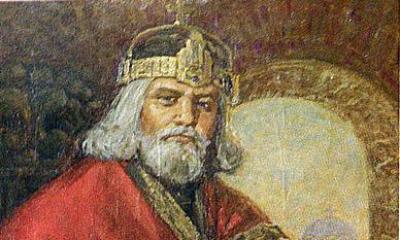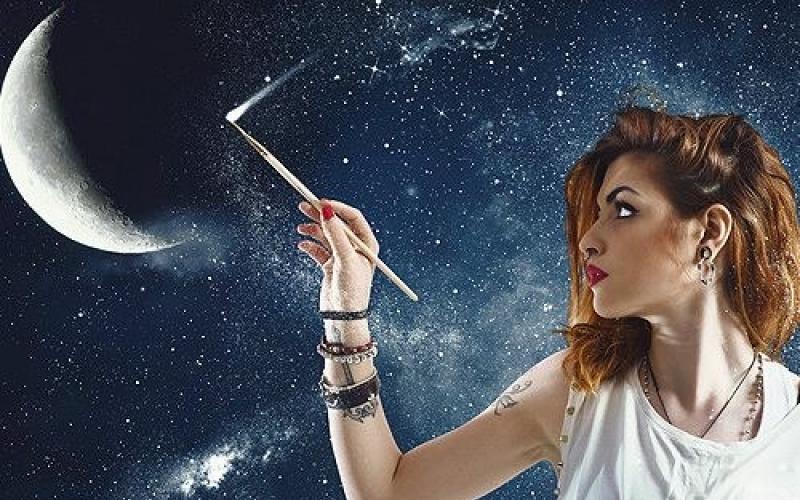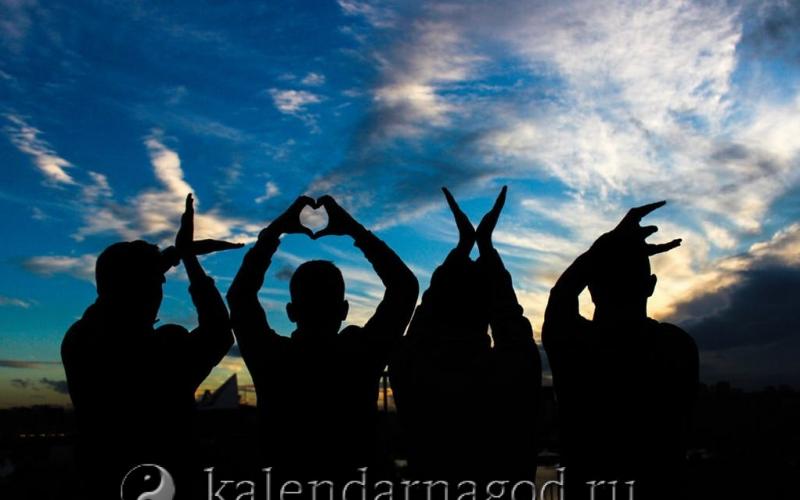David Hensley has worked for the likes of McKinsey & Company, Lippincott, FutureBrand and more and is a world class brand specialist. He has consulted and developed such worldwide famous brands like BMW, Alitalia, Lego, MasterCard, Nestle, Deutsche Telekom, Unilever, Aeroflot, Barclays, Allianz, British Airways, BP and many more.
"Brands are essentially the physical carriers of products. Products are essentially the physical carriers of brands. Therefore, when we talk about brand building, it is carried out not only through communication, not only through a correct understanding of the consumer, but, first of all, it is built through those products that are created, promoted, bought under this brand .
Therefore, this eternal question: what is more important - a product or a brand. Essentially, the question is how: the chicken or the egg? As a manager, as a top manager or CEO own company, you just have to make sure that your brands, products are in good shape.
And how do you keep your brands alive, how do you make sure your products make as much money as possible, how do you make sure that the products you develop get a guaranteed place on the shelf, in the consumer's pocket, anywhere in the head? We will talk about this briefly today.
What is innovation? I am much closer to the definition that was given by Steve Jobs, who recently left us, where without it when it comes to innovation. Apple is one company that produces more with its products than the entire Russian economy combined.
Therefore, the words of Steve Jobs are the most understandable and interesting. What innovation is is essentially the difference between leaders and followers.
The research that was done by the organization - America's leading organization for determining the quality of products - here's how they determine what the difference is between leaders and followers of innovation.
The leaders have more than 80% of new projects. Projects related to the launch of new products. And the followers of companies - no more than 50-60%. More and more interesting statistics about the success of a successful product.
More interesting global statistics suggest that with a skillful approach to new products, 80% of products are successful in the first year . One of the most successful metrics is the percentage of revenue a company generates from new products.
Look carefully:
- bad companies - 9% of their profits come from a new product ;
- for companies that have become masters, the indicator is 38-40% ;
- companies that skillfully launch products - get more than 40% of the profits .
Procter & Gamble, which is one of the leaders in terms of innovation, whose entire business is based on the release of new products, until recently had a new product launch success rate of 30-40%, now it has improved - 79.5%.
There are new products that are new to the market or to the country. Those. they could be produced in a specific market or in a specific country.
We understand that in our country the consumer is very greedy for the word "new", but very often we have nothing but the word "new". Yes - we don't have really new products, ideas and so we play this never ending story of dressing up. It's good for costume balls.
In general, girls really like to dress up, but for products, very frequent dressing does not give additional money, but resources are spent on it. It is better to spend them on some bold, daring, smart products. But this is more risky and requires new technologies that not everyone owns.
Now we will talk about how to create a really new, bold, daring product that will allow you to conquer, reshape and create new markets. How to become Apple, the biggest and strongest company in the world.
A few myths about innovation that I would like to talk about:
1. This is the kind of story of creative geniuses that could be related to Steve Jobs. This is absolutely not the case - this is an absolute work, which has its own roles, areas of responsibility. Not one, even the most ideal genius, can do anything alone, a team is needed.
The most important misconception is that we are working on a project and sooner or later we will succeed. Nothing like this. First, we need to learn to understand marketing. Because I said that up to half of the profits can be received in the company from the release of new products. And that's all - based on the needs of our customers, from an understanding of the needs of our consumers.
2. Another myth is that innovation requires creative people. Yes, of course, they are needed, but to a lesser extent than managers. Those who can work strictly according to the schedule, team work.
Therefore, in order not to be verbose, we start with a strategy.
We got it not so long ago, when we began to really engage in innovation in the right way. Such concepts as: a product arena, a strategic arena of innovation, a platform for innovation - for us were empty sounds. We didn't really understand what it was.
And without a strategy, you will not be able to develop successfully, even if you have tactics. Without a strategy, you will never succeed. Tactics can be understood, but strategy must be constant. If you do not understand what your goals are, what you are striving for, you will never achieve this goal if you do not plan it.
Maybe randomly, but it's not very likely. To do this reliably and correctly, you must first of all have an innovative strategy. And have an innovation management strategy for companies.
My immediate position is a little unusual for you - it's nano marketing coach. I am not responsible for the operational marketing of the company, but for innovative marketing. For the education.
Those. I find people who want to work in our company and train them with the help of my knowledge or invited teachers. Next is the business process. And in order to be successful and creative, you need to debug the business process.
Today people create innovations. The main difference is that while the present is more or less uncertain, the future is quite certain. For this, knowledge is needed not old, but new.
You can project your knowledge onto something that will be valuable in the future. Users that are needed for this product, they are just being created.
There are companies that have been innovative. Then they got lost, became unrecognizable. But these are risks. There are risks, otherwise 8 out of 10 new products would not disappear.
Separately, I would like to thank the organizers. The reports were interesting, the organization of the event itself was at a very good level."
For many brands it is no longer enough to have one label, and therefore they bring new retail chains to the market under different names. Thus, global retailers have to gradually master a new direction in their own work - brand building (if what is happening can be called that).
It is worth noting that most often all brands from a particular retailer work in the same segment.
The reader should have a natural question: why create several brands if, logically, they are competitors to each other? What is the benefit of such a retailer policy?
But in fact she is! And today from our review you will find out what is the essence of the multi-formatness of the world's trading giants, and what well-known brands actually work under one leadership.
1. So, the competition
Two brands occupy b about most of the market, and therefore are able to win more customers. The result is obvious: the retailer's earnings are doubled, competitors from the outside automatically fade into the background.
2. Assets
Another advantageous point is that in this way the corporation increases its assets, the business develops dynamically and grows confidently.
3. Prices and product range
Some brands decide to create a subsidiary in order to align their pricing policy. So, for example, an expensive label can open another brand with more affordable prices, but at the same time adhere to quality standards.
Another company is doing this in order to expand its range. For example, if a clothing brand produces exclusively evening and business attire, having a reputation in this segment, then by creating a new clothing brand, you can display clothes in a different style in its stores, for example, casual.
By having several enterprises under its management at the same time, the retailer has a better chance of capturing the market, and more opportunities to offer all new products. This means that every year the more capricious client is satisfied, and the retailer has earnings, status and reputation. Simply put, the manufacturer creates for himself the opportunity to promptly respond to all market demands.
4. Small towns - new horizons
Most often, large brands work in large cities and metropolitan areas. Small towns are lagging behind in this regard. And this is an excellent ground for reflection, or rather, development, which competent corporations do not disdain today.
5. Fast fashion
Fast Fashion - fast fashion is now in favor, because trends are changeable, and several fashion collections a year are simply not enough for buyers. Regularly releasing new products, the manufacturer attracts more and more new customers with enviable speed.
But why create a new brand for this? It's very simple: too often fast fashion affects the quality of products - it is lower than that of the main brand. But at the same time, the pricing policy of the “fast brand” is already completely different.
Summing up, we can say that the main reasons why companies promote several brands on the market at the same time is the desire to please each group of customers. Indeed, often the ways to reach customers are divided into three categories - high quality, quality at an affordable price and the lowest prices.
Well-known brands promoting related brands
The well-known concern L "Oréal produces and sells cosmetics in almost all countries of the world.
This brand owns at least 25 more brands, among which are quite well-known to us: Giorgio Armani, Yves Saint Laurent, Lancôme, La Roche-Posay, Vichy, Redken, Maybelline, Garnier, Matrix, Kerastase and others.
As you can see, these brands each have their own direction: luxury cosmetics, pharmacy cosmetics, premium class, economy class and even professional cosmetics.
The Loreal company occupies a significant part of the cosmetic market and is able to satisfy the needs of people of different levels of life and views of the world.
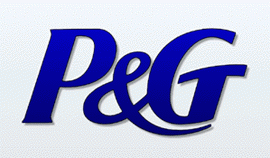
Another world market leader in the direction of "consumer goods".
Over the period of its many years of work, this corporation has expanded significantly, and the first step was the buyout of the German company Wella.
Then P&G successfully bought Gillette, which is no less popular today.
Now both labels are owned by Procter & Gamble and continue to work successfully in the global market, bringing the concern to the leaders of the segment.
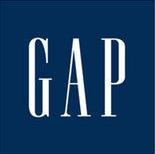
This American brand owns a huge number of stores. GAP sells cosmetics, shoes and clothes, accessories, perfumes, bijouterie, haberdashery.
In 1983, Gap bought the Banana Republic brand, and in 1994 founded another label, Old Navy.
Today, the largest retailer has more than three thousand stores around the world. You can get acquainted with our Catalog of online stores.
and Versus

Everyone knows the luxury brand Versace. But few people are aware that the Versus brand, which has existed since 1989, is the “daughter” of the eminent label. This is an independent, independent brand that differs from the Versace fashion house in its democratic approach to prices, and Versus also opposes chic and luxury.
Has its own online store. Looking through the collections presented in the store, you will notice that this brand focuses on casual style.
Both labels work quite successfully on the world market, and bring their owners a good income.
As you can see, today it is quite normal to have several brands under your leadership at the same time. For businesses, this is beneficial, but for us shopaholics, it’s not so bad.
One of the most difficult periods for people starting their own business is to come up with something that is easy, necessary for all people and that it remains for centuries.
But as history shows, the popularity of famous brands did not come from good branding, but from circumstances.
The names of famous brands were the names of localities, the names and surnames of the founders, reflections of their views on the world as a whole, religious beliefs and even food preferences. Even fortune itself has often been mixed up here
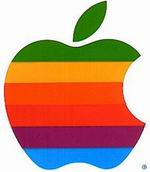 You must remember the company logo Apple: It's a bitten apple. The apple is the favorite fruit of Steve Jobs, the founder of the company. More than three months of careful search for a suitable brand, he chose this particular fruit. The fuller name of Apples Macintosh is one of the most beloved varieties of apples sold in the United States.
You must remember the company logo Apple: It's a bitten apple. The apple is the favorite fruit of Steve Jobs, the founder of the company. More than three months of careful search for a suitable brand, he chose this particular fruit. The fuller name of Apples Macintosh is one of the most beloved varieties of apples sold in the United States.
Adobe photoshop perhaps the most famous program to date. And the company itself Adobe was named after the Adobe Creek river of the same name, which flowed behind the house of the company's founder, John Warnock. Suddenly! Not that word
 Name coca-cola comes from the contents of the drink itself: three parts of the plant coca(of its parts and make the drug cocaine) and one part of a walnut tree cola
Name coca-cola comes from the contents of the drink itself: three parts of the plant coca(of its parts and make the drug cocaine) and one part of a walnut tree cola
 Ole Kirk Kritiansen, Founder Lego, created this name by combining the Danish words for "play" and "good" ( leg And godt). Initially, lego pieces were wooden, but they became so popular that the wooden cubes turned into plastic ones, and the idea of their connection and separation was brought from England by the son of Kritiansen. Easily pronounced even by a very small child, this name is remembered instantly and forever - it is not for nothing that adults often also have a passion for the designer.
Ole Kirk Kritiansen, Founder Lego, created this name by combining the Danish words for "play" and "good" ( leg And godt). Initially, lego pieces were wooden, but they became so popular that the wooden cubes turned into plastic ones, and the idea of their connection and separation was brought from England by the son of Kritiansen. Easily pronounced even by a very small child, this name is remembered instantly and forever - it is not for nothing that adults often also have a passion for the designer.
 Auchan(hauts champs - high fields) - From the French language, it denotes the names of the area where the founder of the company, Gerard Mulier, was born, in French it is pronounced as Oh Sham. In Russia, the company had to re-register due to the peculiarity of the Russian language. Initially, it was Oshan, but since the letter “o” is unstressed and pronounced like “a” in Russia, the company was renamed Auchan. (if you read the word the other way around, it will be like ourA)
Auchan(hauts champs - high fields) - From the French language, it denotes the names of the area where the founder of the company, Gerard Mulier, was born, in French it is pronounced as Oh Sham. In Russia, the company had to re-register due to the peculiarity of the Russian language. Initially, it was Oshan, but since the letter “o” is unstressed and pronounced like “a” in Russia, the company was renamed Auchan. (if you read the word the other way around, it will be like ourA)
 Company Daewoo was built by founder Kim Woo Chong. And he called his company very modestly, translated from Korean as "The Whole Universe"
Company Daewoo was built by founder Kim Woo Chong. And he called his company very modestly, translated from Korean as "The Whole Universe"
 Famous company name Google originated from the word Googol - this is a number with one hundred zeros, i.e. 10 to the 100th power.
Famous company name Google originated from the word Googol - this is a number with one hundred zeros, i.e. 10 to the 100th power.
![]() The name of the company Hitachi derived from the Japanese word for dawn.
The name of the company Hitachi derived from the Japanese word for dawn.

Company HP (Hewlett-Packard)- founders Bill Hewlett and Dave Packard decided to cast lots, tossed a coin to decide whose name would be first in the title. As you can imagine, it was a draw.
![]()
Intel- Founders Bob Noyce and Gordon Moore had already decided to call the company Moore Noyce, but unfortunately, by that time there was already a chain of hotels with the same name. As a result, they decided to stop on the reduction from INT egrated EL electronics. (Built-in electronics)

LG- the first letters of two Korean brands Lucky And goldstar, who decided to unite, and in order not to offend anyone, attributed their first letters to the new logo.
 Brand bmw- is an abbreviation for Bayerische Motoren Werke AG(Bavarian engine factories). The badge itself symbolizes the spinning propeller of the aircraft, and the blue and white color refers to the white and blue color of the flag of the Bavarian state.
Brand bmw- is an abbreviation for Bayerische Motoren Werke AG(Bavarian engine factories). The badge itself symbolizes the spinning propeller of the aircraft, and the blue and white color refers to the white and blue color of the flag of the Bavarian state.
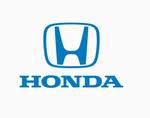 The name of the company Honda originates from the name of the founder Soichiro Honda honeywell.
The name of the company Honda originates from the name of the founder Soichiro Honda honeywell.
 Well-known company IBM takes its name from the abbreviation International Business Machines.
Well-known company IBM takes its name from the abbreviation International Business Machines.
 Name " IKEA” got its name from the abbreviation “Ingvar Kamprad Elmtaryd Agunnaryd”, that is, the name of the founder and the name of the two villages in which he lived.
Name " IKEA” got its name from the abbreviation “Ingvar Kamprad Elmtaryd Agunnaryd”, that is, the name of the founder and the name of the two villages in which he lived.
 Microsoft- comes from the phrase MICROcomputer SOFTware. Originally written as Micro-Soft. But over time, the dash was removed, due to uselessness.
Microsoft- comes from the phrase MICROcomputer SOFTware. Originally written as Micro-Soft. But over time, the dash was removed, due to uselessness.
 Nike. Americans are used to pronouncing it like "Nike", although they themselves admit that this pronunciation is incorrect. According to one version, the company is named after the ancient Greek goddess of victory Nike.
Nike. Americans are used to pronouncing it like "Nike", although they themselves admit that this pronunciation is incorrect. According to one version, the company is named after the ancient Greek goddess of victory Nike.
nintendo- a name that is a composite of three Japanese characters " Nin-ten-do", which is translated into Russian as "heaven blessing hard work."

Nokia- a company that started as a woodworking factory, has grown into a rubber products manufacturer in the Finnish city of Nokia. The company later took its name from the area where Fredrik Idestam bought land in 1868 for his second paper mill.
Nokia Manor has been known since the 1270s, although the first document mentioning it dates back to 1505. The current Nokia is a town 15 km from Tampere. Another thing is that the name of the area itself is believed to come from the old Finnish word nois, which meant black sable, which was once found in those places. When the sable disappeared, the word came to refer to any animal with black fur.
Company Sony appeared after the war. And the whole world had extreme distrust of everything Japanese. The company puzzled for a long time over the name, which was not associated with something Japanese. As a result, the company was called "Sonus". Later came the name Sony.
 Philips- a company that was named after its creator (surprisingly), Friedrich Philips and his son Gerard, who founded it in 1891 in Eindhoven to produce light bulbs.
Philips- a company that was named after its creator (surprisingly), Friedrich Philips and his son Gerard, who founded it in 1891 in Eindhoven to produce light bulbs.
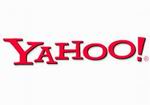 general word yahoo Invented by Jonathan Swift in Gulliver's Travels. That was the name of a repulsive, disgusting person. The founders of Yahoo!» Jerry Yang and David Philo chose this name because they called themselves yahoo's However, now the name has a more significant basis and stands for Yet Another Hierarchical Officious Oracle.
general word yahoo Invented by Jonathan Swift in Gulliver's Travels. That was the name of a repulsive, disgusting person. The founders of Yahoo!» Jerry Yang and David Philo chose this name because they called themselves yahoo's However, now the name has a more significant basis and stands for Yet Another Hierarchical Officious Oracle.
![]() Name Yandex derived from the abbreviation Yet Another Indexer (another indexer).
Name Yandex derived from the abbreviation Yet Another Indexer (another indexer).
![]() Rambler or in English Rambler translates as guide. Guide to the world of the Internet.
Rambler or in English Rambler translates as guide. Guide to the world of the Internet.
Unexpected stories of how world famous companies appeared. Learning and rereading the stories behind the creation of megabrands is a fascinating, educational and very inspiring activity. Often, examples of large companies show that they started, to put it mildly, unexpectedly - they produced non-core goods, made random inventions and, in general, spun as best they could.
Sony's first products were electric rice cookers. LG's Korean economic miracle began with the production of tooth powder.
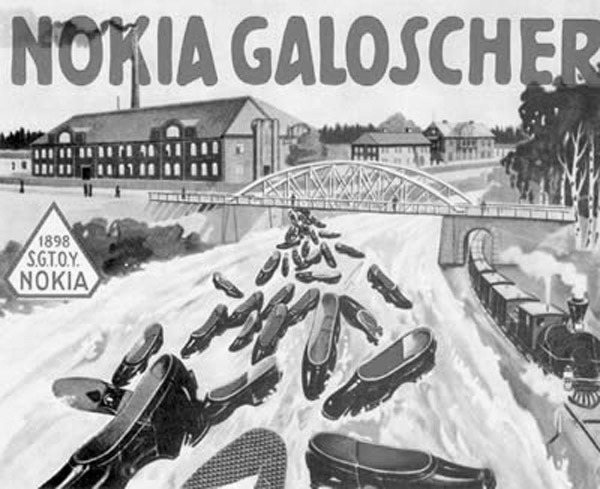
Nokia, in addition to paper, also produced galoshes.
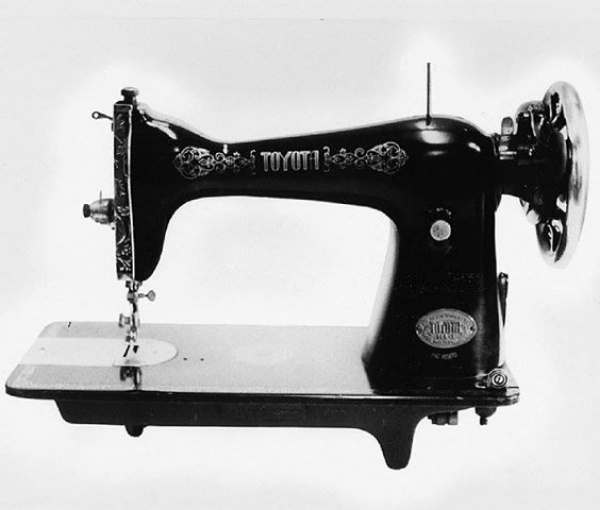
Toyota started the business with sewing machines. And they are still doing it. IKEA founder Ingvar Kamprad started his business selling matches and small goods.

Sharp began with the production of "always sharp" mechanical pencils.

The legendary Bombardier aircraft began with snowmobiles, which are still being produced today.

But the auto giant BMW initially specialized in aircraft and engines for them.
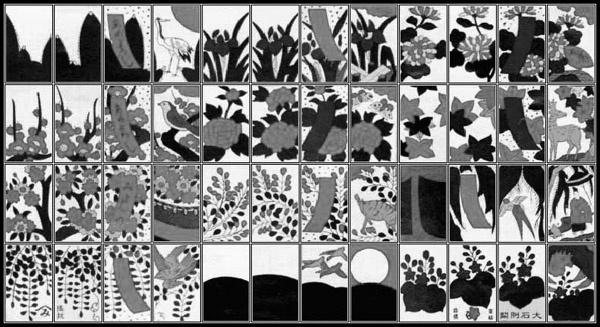
Nintendo released playing cards handmade "Hanafuda" (flower).

Richard Branson's Virgin Group grew out of a small, obscure student magazine.
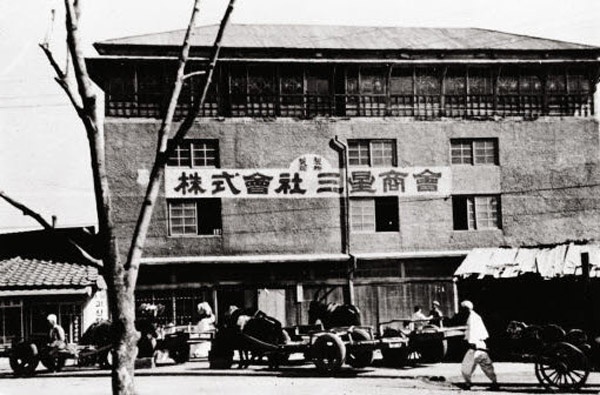
Samsung started out selling groceries.

Sega did slot machines and booths for quick photography.
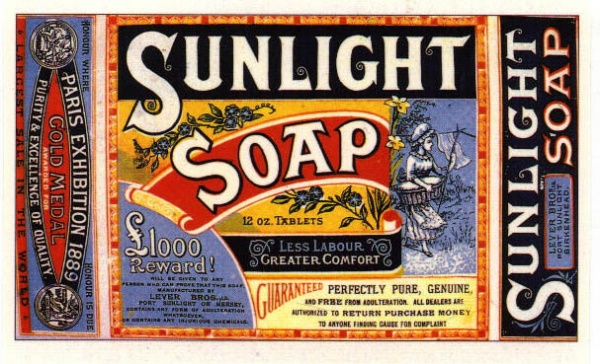
Unilever made two types of products, soap and margarine.

The Lipton Company started out as an ordinary grocery store.
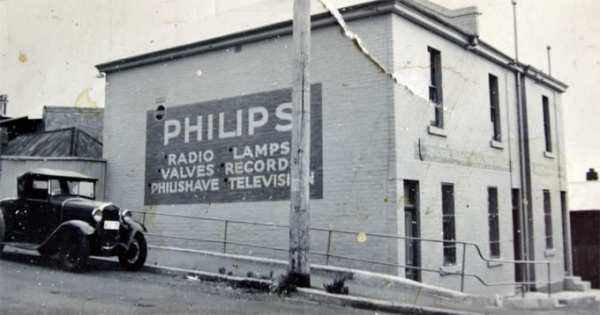
Philips & Co. at the dawn of their activity, they produced light bulbs and radios. And they are doing it now.

The Bonduelle company was engaged in the production of alcohol.

Hugo Boss started by sewing uniforms for the Gestapo.

IBM, the blue whale, before the era of computers produced calculating and analytical machines, as well as scales, cheese cutters, punching machines.
Often, even the most avid fans of certain brands do not think about what kind of story is hidden behind them. So, for example, holding an Apple iPhone in our hands, it is unlikely that we will be visited by the thought of a forbidden fruit, and when buying a jar of Coca-Cola in a store, we will not remember the composition of the fizz. Therefore, we decided to compile a selection of ten famous brands, the history of which is really interesting to read.
Coca-Cola
Everyone knows the story of pharmacist John Stith Pemberton, who literally could not live without creating various chemical solutions. One fine day, inspired by the idea of producing a new tonic drink, he brought out a composition based on coca leaves and nuts from the tropical cola tree. The drink, called Coca-Cola, was first sold only through a vending machine in the city pharmacy, and now it is on the shelves of almost any store.

Apple
The history of the foundation of the most expensive brand in the world is not as simple and romantic as it might seem at first glance. Several versions have come down to us. So, according to one of them, the brand name, as planned, was the personification of the forbidden fruit, which you want to taste. According to another version, the founder of the company, Steve Jobs, decided to give the company that name because he was on an apple diet. Another version says that in this way the company could appear in the telephone directory in first place, overtaking the legendary Atari game manufacturer in the list. But Apple co-founder Steve Wozniak argues that everything is much more prosaic - such a name was chosen due to the fact that there were many apple orchards in Jobs' native land.

Adidas
There is a version according to which, at one time, the word "addidas" was a household word and served to refer to any sportswear. This word was mainly used in the French-speaking countries of Europe, and the English-speaking ones were bypassed. It is not difficult then to guess where the name Adidas could come from (differences in just one letter). Others point out that the name is taken from the first letters of the once used slogan "All Day I Dream About Sport" ("Sports occupy my thoughts all day long"). However, a better-known version says that the once-friendly brothers Adolf and Rudolf Dassler founded their own shoe factory, but after a quarrel, they began to do business separately. As a result, Adolf founded Adidas (the name was chosen from the abbreviation of the name "Adi"), and Rudolf founded Puma.

IKEA
With the history of the origin of the name of one of the largest in the world retail chains for the sale of furniture and household goods, everything is quite simple than in the previous three cases. IKEA stands for Ingvar Kamprad Elmtaryd Agunnaryd, where the first two words are the name and surname of the founder of the company, Ingar Kamprad, the third word is the name of the farm, and the fourth is the name of the suburb where he was born. Here is the encryption!

Amazon
As the founder of the largest American online retailer, Jeff Bezos, told in an interview with one of the foreign publications, the company is named after the longest river in the world. The top manager explains this decision by the fact that he wanted to make the business just as huge and powerful. In fact, he almost succeeded in doing so.

Etsy
The history of the name of the famous online store was carefully hidden for a long time, and this was done intentionally. The founder of the company, Rob Kalin, later said that the etymology of the word lies in the Italian phrase et si, which literally means “oh yes.” This is how the Italians express the point of expression of the highest satisfaction. Among other things, this expression can often be heard from the lips of the heroes of Kalina's favorite film "Eight and a Half" by Federico Fellini.

Lego
Lego has not lost ground in its long 84-year history and is the most recognizable brand in the toy world. The company was founded in 1932 by carpenter Ole Kirk Christiansen, who himself was originally from a small town and had previously only made ladders and stools. Ole Kirk was able to decide on the name of the company only two years after its foundation. Then he announced a competition for the best brand name and won it himself. The name of the company was derived from the Danish phrase "Leg godt", which means "play well".
Nike
One of the most popular sports brands and a direct competitor to Adidas owes its name to Nike, the winged goddess of victory. It was her, as the legend says, that Jeff Johnson, a talented manager who stood at the origins of the company, saw in a dream. Initially, the Nike brand, founded by Phil Knight, was called Blue Ribbon Sports, but was later renamed.

Barbie
The legendary doll, which is actually 57 years old, is named after the daughter of the founders of Mattel (Barbie manufacturer) Ruth and Elliot Handler - Barbara. Ruth first came up with the idea of making a doll when she saw her daughter playing with adult-looking paper dolls. It was then that she decided to create a doll with which children can fully "play adults."
Starbucks
The history of the founding of the famous chain of coffee houses is quite prosaic: three friends, a teacher in English Jerry Baldwin, history teacher Zev Ziegal, and writer Gordon Bowker simply loved tea and coffee and decided to open their own place where people could try them. the best samples. The name Starbucks was coined after one of the characters in Herman Melville's novel Moby Dick. We are talking about a hero named Starbuck, who drank coffee very often and practically could not live without it. Well, the interior of the network also adheres to the concept of a marine style.
Translation by Bella Kodzokova




